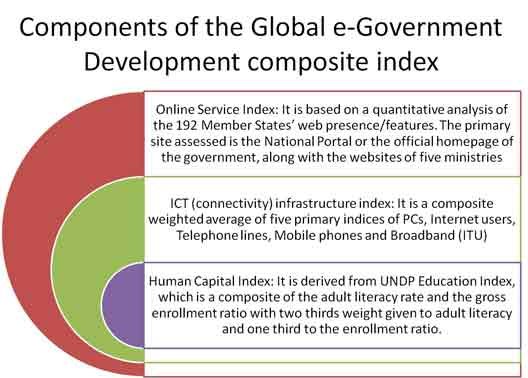The UN E-Government Survey provides a bi-annual assessment of national online services, telecommunication infrastructure and human capital of 192 Member States.
- Is South Korea’s government really making the best use of ICT for governance?
- Does it even make sense to measure the “level” of e-government development in a country and is it possible to do so?
- Are rankings preferred to “best practice cases”?
- Do the rankings include aspects of MDG priorities such as e-inclusion (gender equality)?
- Do they measure usage of technologies such as mobile technology and social media?
These were some of the questions that were discussed earlier this month at an Expert Group Meeting (EGM) on the topic "E-Government Survey: Towards a more citizen-centric approach” held in New York, on 6th and 7th December 2010. It was organized by the Division for Public Administration and Development Management (DPADM) of the United Nations Department of Economic and Social Affairs (UNDESA), and I served as a co-facilitator for one of the sessions. The purpose of the meeting was to provide a forum for discussion for experts to examine the Survey’s methodology, in light of current trends in e-government programs. The meeting also discussed emerging issues such as user take-up, enterprise architecture, interoperability, back-office reform, and open government data initiatives. The objective of the meeting was to provide advice and recommendations on how to integrate these issues into the 2012 edition of UN e-Government Survey.
The Survey tracks progress of the 192 Member States in implementing e-government programs and measures and compares their state of e-government development via the Global e-Government Development Index as the barometer. See below for an illustrative graphic of the components of this Index:

This methodology is based on the assumption that there are specific stages of e-government evolution along the following lines:

The final stages assumes that horizontal connections (between government agencies) as well as vertical connections (among central and local government agencies) are in place, that a supporting infrastructure is in place, with full interoperability, that there are G2C (Government to citizen connections) as well as G2G and G2B elements, with connections among various stakeholders (including government, private sector, academia, NGOs and civil society).
What was different about this particular expert session was that it took into account several important factors:
- The latest trends and technologies (open data, cloud computing, social media)
- The importance of a citizen-centric government
- Inclusion and accessibility
- User take-up and training
- Accessibility of Internet or mobile connectivity to all
- Multi-channel service provision
- Whole-of-government (WOG) and one-stop service provision
- The environment
I co-chaired the session on multichannel delivery with Mr. Patrick Spearing, who is the Senior Governance and Public Administration Officer at DPADM (UN). Our team made the following points:
1) Citizen-centric: for services, it is absolutely essential to place the citizen at the center of the government service delivery. At present, governments agree that this should be done, however this is not always implemented in practice. If the government services are citizen-centric, then by default, you will interact with the government based on who you are and what your needs are and not based on how the government is organized:
a. As an example, let’s take the example of a citizen who needs to pay taxes. Let’s say you are a senior bureaucrat in the Government who uses his assistant even to type emails. Maybe you want to just pick up the phone and pay your taxes over the phone. Take another example, you complicated your taxes this year and you want to be sure it is done exactly right. So you want to mail the forms in or drop them off personally. Or you are a connected citizen and would like to pay your taxes using the Internet or SMS. Finally if you have special needs, those should be taken into account as well.
b. Therefore, multichannel delivery of services would mean that the needs of each of the different kinds of citizens mentioned above would be served. Rather than moving all services online, the philosophy of e-government is to provide services in a meaningful way to the citizens, using the channels most preferred by them.
2) New trends and effect of multichannel delivery should be taken into account:
a. This will mean, for example, that where mobile penetration and device based internet usage is high, service delivery should be also be organized around device based as opposed to PC-based access to information and services (e.g. mobile web), and also take the role of social media into account.
b. With San Francisco 311, for example, residents can report a non functional traffic light, road maintenance needs, as well as receive information on city government via Twitter.
I will end with a comment made by the Chief, e-Government Branch (eGB) DPADM at United Nations. Mr. Vincenzo Aquaro commented on the need to make e-government measurement flexible and agile enough to respond to the ever-changing environment. Once this is done, we can get a much better sense of how governments are responding to the technology challenges discussed above.
|